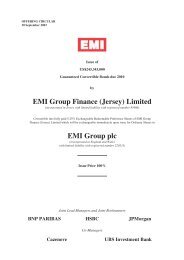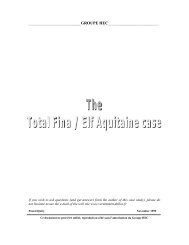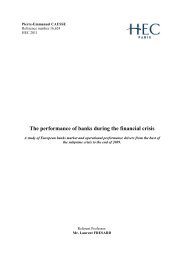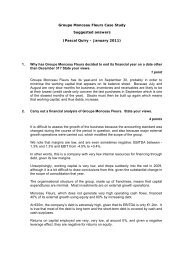Thesis_gd_final_vers.. - Vernimmen
Thesis_gd_final_vers.. - Vernimmen
Thesis_gd_final_vers.. - Vernimmen
Create successful ePaper yourself
Turn your PDF publications into a flip-book with our unique Google optimized e-Paper software.
anching allowed statewide consolidation of the banking industry. Several scholars looked<br />
at the effect of such deregulation on economic growth and have found mixed results.<br />
However, it is certain that such deregulation helped to build a stronger banking system 3 .<br />
1978-1994 Removal of restrictions on interstate branching<br />
Maine again was the first state to allow bank holding companies from other states to<br />
acquire Maine banks in 1978, as long as reciprocity existed with the state of the acquiring<br />
banks. Restrictions began being effectively dismantled only in 1982 when New-York state<br />
passed a similar law, and when Massachusetts passed regional reciprocity limited to New-<br />
England states. Before the end of the decade, most states (but six of them) participated to<br />
one or several regional pacts.<br />
1982 Garn-St. Germain Depository Institutions Act<br />
The original purpose of the Act was to deregulate the thrift industry by allowing them to<br />
issue commercial loans and thus to compete directly with commercial banks. The act also<br />
removed regulation Q which had caused a massive outflow of deposits from thrifts and<br />
commercial banks to money market mutual funds. The act also permitted banks and thrifts<br />
to create money market deposits accounts to compete directly with money market funds.<br />
The Bank Holding Company Act of 1956 was amended to allow bank holding companies<br />
to acquire failed banks and thrifts in any state, regardless of state law.<br />
1987 Authorisation by the Federal Reserve to create Section 20 subsidiaries<br />
In compliance with the powers granted by the Bank Holding Company Act of 1956 and the<br />
1970 Amendments to the Act, the Federal Reserve allowed banks to form investment<br />
banking subsidiaries. These newly formed affiliates were permitted to underwrite municipal<br />
revenue bonds, mortgage and asset-backed securities (Tier 1 powers). The revenues<br />
generated by the Section 20 subsidiaries should not exceed 5% of total revenues, in order to<br />
respect the restrictions imposed by the Section 20 of the Banking Act of 1933.<br />
1989 Extension of Section 20 subsidiaries permitted activities<br />
The Federal Reserve granted additional authorizations to selected group of banks to<br />
underwrite corporate securities. This privilege was then increase and extended to other<br />
banks. The revenue limit was raised to 10%.<br />
1989 Financial Institutions Reform, Recovery and Enforcement Act (FIRREA)<br />
The Act came as a response to the Savings & Loans crisis. It allowed bank holding<br />
companies to acquire thrifts, required agencies to issue CRA (Community Reinvestment<br />
3 In US bank deregulation in historical perspective, Calomiris presents the compared average return on assets and<br />
return on equity for Illinois, a unit branching state and North Carolina, where statewide branching was allowed.<br />
We see that return on assets and return on equity are much higher and more stable in North Carolina.<br />
- 6 -










